Are you in search of the simplest solution to combine real-time information into your decentralized purposes (dapps)? In that case, you’ve come to the fitting place. In right this moment’s information, we’ll introduce you to Moralis’ Streams API—the final word instrument for monitoring blockchain occasions. In doing so, we’ll examine the Streams API with Ethers.js to spotlight why the previous is the higher possibility for you when it’s essential get real-time Web3 information. For a fast overview, try the comparability desk beneath:
For an in depth breakdown of the desk above, additional info on Ethers.js and the Streams API, and a step-by-step tutorial on utilizing these instruments, be a part of us on this information as we lay all of it out for you. Alternatively, you possibly can watch the great Moralis YouTube video linked beneath:
Prepared to begin utilizing the Streams API instantly? Join free with Moralis to realize immediate entry to our suite of top-tier improvement instruments!
Overview
One solution to get real-time Web3 information is to leverage Ethers.js, a outstanding JavaScript library for constructing blockchain-based initiatives. Nonetheless, organising on-chain occasion listeners with Ethers.js may be complicated, time-consuming, and expensive. Fortunately, there’s a extra environment friendly different: the Moralis Streams API!

The Streams API considerably simplifies the method of getting real-time Web3 information. With our user-friendly interface, you possibly can effortlessly monitor any on-chain occasion for any pockets, deal with, or asset with just some clicks. Curious to be taught extra in regards to the Streams API, the way it works, and why it’s a game-changer in comparison with Ethers.js? On this complete information, we’ll delve into all these facets and extra. Let’s get began!
What’s Ethers.js?
Ethers.js is a compact and full JavaScript library for constructing dapps. Like typical programming libraries, Ethers.js provides a set of prewritten code snippets that carry out important on a regular basis capabilities, serving to builders keep away from duplicating effort when creating blockchain-based initiatives. As such, Ethers.js streamlines Web3 improvement, permitting customers to seamlessly work together with the Ethereum community and its in depth ecosystem.
What are a number of the core options and advantages of Ethers.js?
Light-weight: The Ethers.js library is compact, with a measurement of ~88kb when compressed and ~284kb uncompressed, making it best for dapps the place quick load occasions are essential.
Complete Performance: Regardless of its small measurement, Ethers.js delivers in depth performance for interacting with the Ethereum community, together with pockets creation, contract interplay, message signing, and extra.
Occasion Listeners: Ethers.js permits builders and purposes to hearken to good contract occasions, facilitating responsive and dynamic dapp experiences.
Now that we’ve got an outline of what Ethers.js is and its advantages, let’s additionally dive into a number of the library’s limitations!
Exploring the Limitations of Ethers.js
Whereas Ethers.js can be utilized to get real-time Web3 information, it might not all the time be the perfect selection. Listed below are three basic limitations of Ethers.js:
Setup Complexity: Configuring information pipelines with Ethers.js is usually a cumbersome and complex course of. It requires a considerable quantity of code, and builders should devise strategies to watch every occasion, contract, or asset they wish to monitor. This makes the setup each time-consuming and resource-intensive.
Unstable & Unreliable: When utilizing Ethers.js to get real-time Web3 information, builders work together instantly with RPC nodes. In the event that they select an unreliable supplier, the nodes may be fairly unstable, particularly for newer blockchain networks. Moreover, if an occasion is missed for any purpose, Ethers.js lacks native mechanisms to ship it retroactively.
Uncooked Knowledge: Ethers.js returns uncooked, undecoded information. As such, the responses sometimes embrace primary info like block numbers, transaction hashes, and so on. To acquire further info, builders should use numerous third-party APIs, including to the complexity.

So, what’s the different?
Nicely, now you can streamline the method of listening to on-chain occasions with Moralis’ Streams API!
The Final Ethers.js Various – Exploring Moralis’ Streams API
Moralis’ Streams API is the final word instrument for streaming real-time on-chain information instantly into your dapps. With our user-friendly point-and-click interface, organising Web3 information pipelines is easy, permitting you to obtain instantaneous updates on any pockets or contract occasion by way of webhooks as quickly as they happen.

The Streams API is a extremely dynamic and complete resolution, supporting over 44 million contracts throughout all main chains, together with Ethereum, Polygon, BNB Sensible Chain (BSC), and plenty of extra. This highly effective interface covers all varieties of occasions, tokens, wallets, DeFi platforms, and extra, offering you with every part you want when it comes to real-time Web3 information.
By leveraging the Streams API, you possibly can seamlessly combine real-time alerts into your dapps, maintain your databases populated with the most recent information, and improve your initiatives with present, actionable insights.
Now that you’ve got an outline of Moralis’ Streams API, let’s discover the advantages of this premier instrument!
Advantages of Moralis’ Streams API
So, why are builders selecting to leverage Moralis’ Streams API as an alternative of Ethers.js to get real-time Web3 information? To reply this query, let’s discover 5 advantages of this industry-leading instrument:
Easy Setup: The Streams API supplies an intuitive interface, permitting you to watch occasions for any pockets, deal with, or asset with only a click on. Moreover, you possibly can monitor a number of occasions in a single stream, together with ERC-20 transfers, native transactions, inner transactions, and extra.
Cross-Chain Assist: Moralis helps over 30 blockchain networks and counting. With the Streams API, you possibly can seamlessly add and take away chains out of your streams on the click on of a button.
Complete Knowledge: With Moralis’ Streams API, you obtain absolutely decoded information straight out of the field. Every response is enriched with deal with labels, token logos, balances, metadata, and rather more.
Scalability: The Streams API is probably the most scalable resolution for real-time information. Monitor one to 100 million addresses in the identical stream and add or take away any deal with on the fly with out breaking a sweat.
100% Supply Assure: In case your infrastructure is down for any purpose, Moralis will maintain all failed deliveries in a backlog. You may replay every occasion from there, guaranteeing you by no means miss an on-chain occasion once more.
Full Comparability: The Finest Option to Get Actual-Time Web3 Knowledge – Moralis Streams API Vs. Ethers.js
Now that you’ve got an outline of each Ethers.js and Moralis Streams, let’s examine the 2 to spotlight why you must use Moralis to get real-time Web3 information:
Tutorial: How one can Get Actual-Time Web3 Knowledge with Moralis Streams
On this part, we’ll present you the right way to seamlessly get real-time Web3 information with Moralis Streams. Particularly, we’ll display the right way to monitor USDC transactions in eight easy steps:
Step 1: Join free with Moralis, log into your account, navigate to the “Streams” tab, and click on the “+ Create Stream” button:
Step 2: Present a reputation to your stream and choose the kind of occasions you wish to monitor. For this tutorial, select “Contract Occasions”:
Step 3: Specify the good contract occasions you wish to monitor. On this case, choose “Widespread Occasions” adopted by “Token Transfers”:
Step 4: Assign a tag to your stream and choose further related info you wish to embrace within the responses:
Step 5: Enter the contract deal with(es) you want to monitor. For this tutorial, we’ll use the USDC contract:
Step 6: Select the chain(s) you wish to monitor. We’ll choose Ethereum, however you possibly can monitor any community(s) you like:
Step 7: Take a look at your stream to make sure every part works as meant (elective):
Step 8: Add your webhook URL, hit the “Proceed” button, and click on “Save & Deploy”:
As soon as deployed, you’ll obtain real-time updates despatched to your webhook vacation spot at any time when there’s a brand new USDC switch. Right here’s an instance of what the response may appear to be:
//…
{
transactionHash: ‘0x1a3807aa7f7d1f4806245115d7b8a32ec105ce20f2b4a8ca31f9a305127c0201’,
logIndex: ‘409’,
contract: ‘0xa0b86991c6218b36c1d19d4a2e9eb0ce3606eb48’,
triggered_by: [Array],
from: ‘0x47fbac3d17dcd481c3bb428adde4272b458cf724’,
to: ‘0x8ad599c3a0ff1de082011efddc58f1908eb6e6d8’,
worth: ‘5187003613’,
tokenName: ‘USD Coin’,
tokenSymbol: ‘USDC’,
tokenDecimals: ‘6’,
valueWithDecimals: ‘5187.003613’,
possibleSpam: false
},
/…
Congratulations! You now know the right way to get real-time Web3 information with Moralis Streams. From right here, you should utilize these steps to watch any customized occasion, pockets, or contract on any blockchain!
For a extra detailed breakdown of the steps and sensible examples of utilizing the Streams API, please watch the Moralis YouTube video beneath:
Streams API Use Instances
Moralis’ Streams API provides distinctive flexibility, making it appropriate for numerous use circumstances. Listed below are just a few noteworthy examples:
Notifications: Arrange real-time alerts to maintain your dapp customers knowledgeable about their pockets holdings. Notify them immediately about occasions similar to value fluctuations, token transfers, staking rewards, and extra. The Streams API is the right instrument for reinforcing person engagement in your initiatives.
Populate Databases: Observe, index, and retailer on-chain occasions in actual time. Preserve an correct and complete file of actions associated to any pockets, contract, deal with, or asset. This ensures your databases stay dependable and up-to-date.
Observe Token Balances: Monitor, replace, and show the balances of customers’ wallets in actual time inside your initiatives. That is excellent for implementing options like token gating.

The examples above are solely a number of notable use circumstances. Because of the Streams API’s distinctive versatility, it may be custom-made for a variety of further purposes!
Past Streams & Ethers.js – Diving Deeper Into Moralis’ Web3 APIs
Moralis is the main information supplier in Web3, providing top-tier nodes and APIs to boost your developer expertise. Our suite of superior improvement instruments consists of over ten specialised interfaces, such because the Pockets API, Token API, NFT API, and Streams API. As such, when leveraging Moralis, you possibly can construct cryptocurrency wallets, decentralized exchanges (DEXs), and every part in between with out breaking a sweat!

However what makes our APIs the most effective within the enterprise?
Complete: Our APIs are outcome-driven, offering in depth information with minimal calls. Entry each on-chain and off-chain information in a single request, enabling you to construct dapps extra effectively.
Cross-Chain Compatibility: Simplify your improvement course of with APIs that help a number of chains. Construct dapps on Ethereum, Polygon, BSC, and extra networks utilizing one unified toolkit.
Safe: Take pleasure in enterprise-grade information safety with Web3’s solely SOC 2 Kind 2 licensed infrastructure supplier.
Now, to additional spotlight the facility of Moralis, let’s dive into our Web3 API suite!
Moralis’ Web3 API Suite
Our suite of premier APIs options over ten use case-specific interfaces. And whereas we are able to’t cowl all of them on this information, we’ll spotlight three key examples you’ll possible discover useful when constructing dapps:
Pockets API: The Pockets API is a cutting-edge interface for constructing wallets and integrating pockets performance into dapps. With the Pockets API, you possibly can simply retrieve any pockets’s historical past, web value, profitability, token balances, and extra with just some traces of code.

Token API: The Token API is your go-to interface for ERC-20 information, best for creating DEXs, token explorers, and related purposes. This intuitive API lets you seamlessly fetch token balances, metadata, costs, and rather more, simplifying your improvement course of.
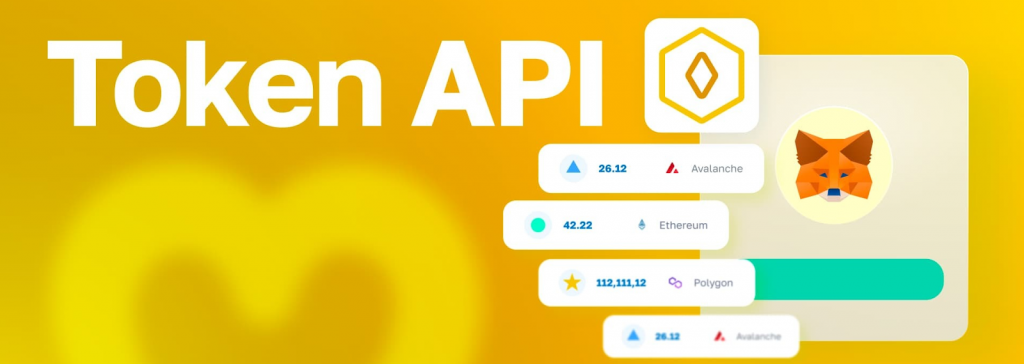
NFT API: Moralis’ NFT API is ideal for creating NFT marketplaces, Web3 video games, or another NFT-based platforms. With single traces of code, you possibly can entry NFT balances, metadata, costs, and extra utilizing the NFT API.

Please go to the official Web3 API web page for an in-depth have a look at these interfaces and to be taught extra about our different APIs!
Abstract: Streams Vs. Ethers.js – The Finest Option to Get Actual-Time Web3 Knowledge
One solution to get real-time Web3 information is to leverage Ethers.js, a well known JavaScript library for constructing dapps. Nonetheless, monitoring blockchain occasions with Ethers.js may be sophisticated, time-consuming, and costly. Luckily, there’s a greater different: Moralis’ Streams API!
The Streams API simplifies the method of fetching real-time Web3 information. With its intuitive point-and-click interface, you possibly can simply arrange streams to watch occasions for any pockets, deal with, or asset on any chain with out breaking a sweat!
However what makes the Streams API a superior selection in comparison with Ethers.js for querying real-time Web3 information?
Right here’s a fast comparability of the 2:

In the event you discovered this information on Ethers.js and Streams useful, take into account exploring extra content material on our weblog. For example, try our current articles on:
Moreover, if you wish to use the Streams API your self, remember to register for an account with Moralis. You may join free and acquire immediate entry to our industry-leading improvement instruments!








